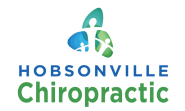As chiropractors, we are often asked the difference between massage and stretching, and if you need one more than the other; so, we created this article to answer some of your questions.
When it comes to reducing muscle tension and improving flexibility, both massage and stretching are essential practises. Both techniques are commonly used, though they serve different purposes which can be utilised to benefit your physical health in different ways.
Massage: Relieving Tension and Enhancing Circulation
Massage involves manipulating the muscles and soft tissues by using a variety of techniques. The goal of massage is to alleviate muscle tension, reduce pain, and improve circulation.
There are many different types of massage therapy, some include Swedish massage and deep tissue massage. These techniques target muscle knots, improve blood flow and help the body and mind relax.
Massage is especially helpful for:
- Relieving muscle soreness: If you have been active and are experiencing muscle tightness or soreness, massage can help speed up recovery and can ease these symptoms.
- Increase flexibility: Though it doesn’t stretch the muscles directly,massage helps relax our muscles making them more flexible which contributes to a wider range of motion.
- Stress Relief: The soothing effects of massage help relax the body and mind, which then lowers your cortisol levels (stress hormone) alongside physical relief.
Stretching: Maintaining Flexibility
Stretching involves lengthening the muscles to improve flexibility and range of motion. Stretching is essential for maintaining flexibility, reducing stiffness, and preventing injury, especially in those who are active.
Stretching is ideal for:
- Improving and Maintaining Flexibility: By stretching regularly, you are lengthening your muscle fibres which helps prevent the muscles from becoming tight or stiff over time.
- Releasing Tension: Long-term stretching can help release built-up tension in muscles, gradually promoting better movement and posture.
- Preparing for exercise: Dynamic stretching is essential in preparation for exercise, this wakes up your muscles and gets your blood pumping to areas of need. Dynamic stretching helps prevent injury.
- Post Exercise: Stretching after exercise helps the muscles cool down and reduce muscle tension acquired from exercise.
When to use Massage and Stretching:
Incorporating massage and stretching into your daily routine is important to ensure you are giving your body the best chance at recovery, relieving muscle soreness, and reducing injury risk.
Regarding pre and post-exercise, it is best to choose stretching (dynamic and static). Light dynamic stretching before activity helps increase blood flow, preparing the muscles for an increased workload. Immediately after exercise, static stretching is ideal. This helps cool down muscles and speed up muscle recovery.
Massage is often more effective for those struggling with chronic pain, muscle tension, or stress. Stretching is great for maintaining muscle length, but massage works on those deeper muscle layers, providing greater relief for muscle knots, back pain, or stress-induced tension.
To Summarise:
Both massage and stretching are beneficial for your physical health and can complement each other. Both techniques are used for different purposes to benefit the muscles; stretching is used to lengthen the muscles, preventing stiffness while massage works on releasing tension from the deeper muscle layers.
Incorporating both into your daily routine will enhance mobility, and muscle health, help prevent injury and improve overall muscle health.
